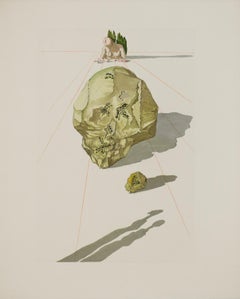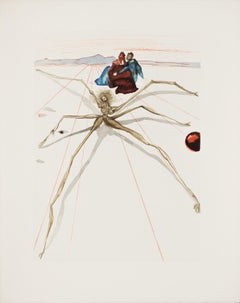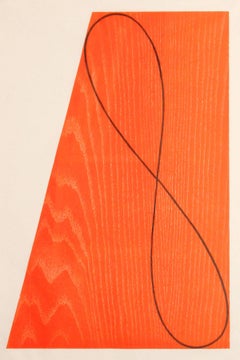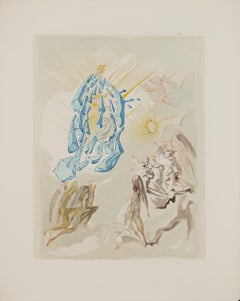Woodcut Prints and Multiples
20th Century Surrealist Woodcut Prints and Multiples
Paper, Woodcut
20th Century Surrealist Woodcut Prints and Multiples
Paper, Woodcut
1990s Abstract Woodcut Prints and Multiples
Woodcut
1960s Surrealist Woodcut Prints and Multiples
Woodcut
Mid-20th Century Modern Woodcut Prints and Multiples
Woodcut
20th Century Surrealist Woodcut Prints and Multiples
Paper, Woodcut
Early 20th Century Modern Woodcut Prints and Multiples
Woodcut
15th Century and Earlier Old Masters Woodcut Prints and Multiples
Woodcut
1960s Surrealist Woodcut Prints and Multiples
Woodcut, Paper
2010s Contemporary Woodcut Prints and Multiples
Woodcut
1850s Realist Woodcut Prints and Multiples
Printer's Ink, Rice Paper, Woodcut
20th Century Modern Woodcut Prints and Multiples
Woodcut
Early 1900s Modern Woodcut Prints and Multiples
Woodcut
1960s Surrealist Woodcut Prints and Multiples
Woodcut
1960s Surrealist Woodcut Prints and Multiples
Woodcut, Paper
1830s Modern Woodcut Prints and Multiples
Woodcut
1960s Modern Woodcut Prints and Multiples
Woodcut
1990s Abstract Woodcut Prints and Multiples
Woodcut
Early 1900s Expressionist Woodcut Prints and Multiples
Woodcut
1950s American Modern Woodcut Prints and Multiples
Woodcut
2010s Contemporary Woodcut Prints and Multiples
Woodcut
1950s American Modern Woodcut Prints and Multiples
Woodcut
1960s Abstract Woodcut Prints and Multiples
Woodcut
Late 20th Century Modern Woodcut Prints and Multiples
Woodcut
1940s Art Deco Woodcut Prints and Multiples
Woodcut
1940s Art Deco Woodcut Prints and Multiples
Woodcut
Early 2000s Abstract Woodcut Prints and Multiples
Woodcut
1940s Art Deco Woodcut Prints and Multiples
Woodcut
1940s Woodcut Prints and Multiples
Woodcut
1940s Art Deco Woodcut Prints and Multiples
Woodcut
1920s Art Deco Woodcut Prints and Multiples
Woodcut
1960s Surrealist Woodcut Prints and Multiples
Woodcut
Mid-20th Century Surrealist Woodcut Prints and Multiples
Woodcut
1960s Surrealist Woodcut Prints and Multiples
Woodcut
1920s Art Deco Woodcut Prints and Multiples
Woodcut
Late 20th Century Surrealist Woodcut Prints and Multiples
Woodcut
1960s Surrealist Woodcut Prints and Multiples
Woodcut
1930s American Impressionist Woodcut Prints and Multiples
Woodcut
1930s American Impressionist Woodcut Prints and Multiples
Woodcut
1960s Surrealist Woodcut Prints and Multiples
Woodcut
1960s Surrealist Woodcut Prints and Multiples
Woodcut
1950s American Modern Woodcut Prints and Multiples
Woodcut
2010s Abstract Woodcut Prints and Multiples
Paper, Woodcut
Early 2000s Abstract Woodcut Prints and Multiples
Paper, Woodcut
20th Century Surrealist Woodcut Prints and Multiples
Paper, Woodcut
Early 2000s Abstract Woodcut Prints and Multiples
Paper, Woodcut
Mid-20th Century Modern Woodcut Prints and Multiples
Woodcut
Mid-20th Century Woodcut Prints and Multiples
Woodcut
Mid-20th Century Modern Woodcut Prints and Multiples
Woodcut
Mid-20th Century Woodcut Prints and Multiples
Woodcut
Mid-20th Century Woodcut Prints and Multiples
Woodcut
Mid-20th Century Woodcut Prints and Multiples
Woodcut
2010s Abstract Woodcut Prints and Multiples
Paper, Woodcut
2010s Abstract Woodcut Prints and Multiples
Paper, Woodcut
Mid-20th Century Surrealist Woodcut Prints and Multiples
Woodcut
Mid-20th Century Surrealist Woodcut Prints and Multiples
Woodcut
1980s Abstract Woodcut Prints and Multiples
Woodcut
Late 20th Century Surrealist Woodcut Prints and Multiples
Woodcut
Find Original Woodcut Prints for Your Home
Original woodcut prints and other types of fine art prints can help enhance any room in your home while supporting your effort to tie an interior design together.
Woodcut is a type of relief print that is made by carving a block of wood with a knife or gouge. The surface is then inked with a roller and pressed onto paper. Unlike with intaglio techniques, the section of the surface that has not been incised is what appears in the print.
Woodcut printmaking is one of the oldest printing techniques, first used in 9th-century China, mastered by Albrecht Dürer during the Northern Renaissance and famously associated with the ukiyo-e artists of 17th- and 18th-century Japan. (For concision, power and delight, it’s hard to beat a Japanese woodblock print, the product of an artistic tradition that is aging very well indeed.)
Elsewhere, German Expressionists like Emil Nolde and Ernst Ludwig Kirchner embraced the medium for its bold, graphic power in the 1920s, and artists continue to use it today.
OK, so what is the difference between a woodcut print and an intaglio print?
“[Intaglio] is the opposite of relief printing — woodcut, linoleum cut, letterpress, and rubber or metal stamping,” says Rhea Fontaine of Paulson Fontaine Press. “With relief printing, the raised areas of the printing surface are inked and printed, while the areas that have been cut away do not pick up the ink. Often these prints are made by hand.”
Find original woodcut prints by Katsushika Hokusai, Suzuki Harunobu, M.C. Escher, Mino Maccari and many other artists on 1stDibs.
Read More
Art Brings the Drama in These Intriguing 1stDibs 50 Spaces
The world’s top designers explain how they display art to elicit the natural (and supernatural) energy of home interiors.
Welcome (Back) to the Wild, Wonderful World of Walasse Ting
Americans are rediscovering the globe-trotting painter and poet, who was connected to all sorts of art movements across a long and varied career.
Shapero Modern’s Director Tells Us All about 20th-Century Prints
Tabitha Philpott-Kent knows a lot of art multiples. Here, the London gallery director talks about what makes printmaking so fabulous.
Yoshitomo Nara Puts a Punk Rock Twist on the Traditional Prints of His Ancestors
The forever-rebellious Japanese artist craftily defaces famous Edo Period woodblock prints with “In the Floating World.”
Red Grooms Salutes the ‘Ninth Street Women’ Who Revolutionized Modern Art
In a new show of peppy portraits, the 85-year-old artist looks back at 1950s New York, when the Abstract Expressionists ruled the scene. Only now, the women Ab-Ex artists get more of the spotlight than the men.
Just What Is an Intaglio Print, and What Makes It a Good Investment?
Bay Area art publisher Rhea Fontaine explains the difference between intaglio and woodcut printing, how to frame fine art prints and what makes them attractive to collectors.
Andy Warhol Piles Up the Gifts in This Fanciful Christmas Print
Created in the late 1950s, it’s one of a surprising number of holiday-themed works by the prolific Pop artist.
A Derrick Adams Double Portrait Brings Out the Interior Lives of His Subjects
Adams has skyrocketed to art superstardom with his exuberant depictions of Black life. Here's what makes his work important to our times.



